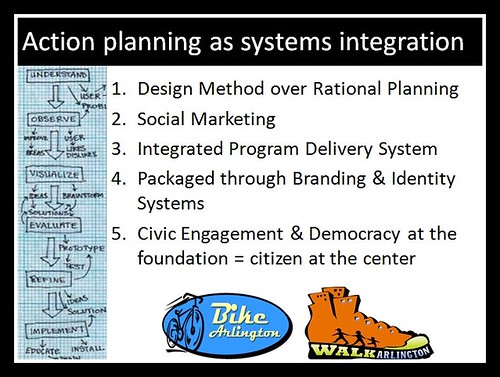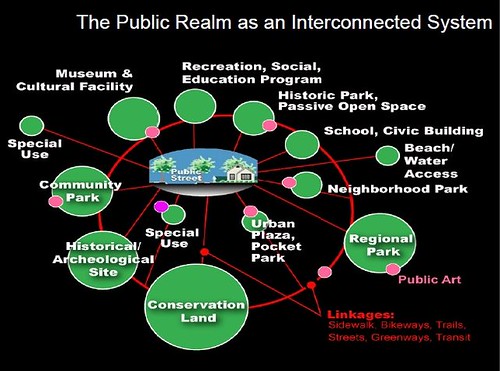Christopher Hawthorne, LA Times architecture critic to become Chief Design Officer for the City of Los Angeles
It's pretty typical for business or transportation journalists to go work for local government and transit agencies in the pr/communications side. But an architecture writer to take on a design role for a city is something else.
-- "Why I'm leaving The Times for a job at City Hall"
Christopher Hawthorne is one of the better architecture critics at a major newspaper, along with Christopher Hume at the Toronto Star, Blair Kamin at the Chicago Tribune, John King at the San Francisco Chronicle, Michael Kimmelman and Robin Pogrebin at the New York Times, Steven Litt of the Cleveland Plain Dealer, and Inga Saffron at the Philadelphia Inquirer.
Hawthorne, like Kamin, has written on a wide range of topics, not limited to Greater Los Angeles. For example, some of his writings on Washington's National Mall, Monuments, and Museums supersede local coverage.
From the article:
Los Angeles Mayor Eric Garcetti has asked me to fill a new post called chief design officer for the city. In that role, beginning next month, I'll be working in the mayor's office to raise the quality of public architecture and urban design across the city — and the level of civic conversation about those subjects.The full article lays out quite a program.
In its basic outline, the job will resemble the other "chief" positions in Garcetti's administration, including chief sustainability officer and chief data officer. In other ways, it'll be something of an experiment, an effort to produce better architecture, urban design and what we once called "public works" for Los Angeles.
Sometimes that effort will take the form of a design competition, a public forum (like the ones I've organized with Occidental College in recent years) or a campaign to persuade talented emerging architects to pursue civic projects.
At other times, it will mean supporting a creative zoning change or the work of city officials in a range of departments — Planning Director Vince Bertoni, Gary Lee Moore and Deborah Weintraub of the Bureau of Engineering and Transportation Department General Manager Seleta Reynolds, among others — who have been promoting good design for years.
I haven't seen a similar position elsewhere, focused on the aesthetic value of the built environment, but some cities, like Baltimore and Cleveland, have particularly robust design review processes that are not necessarily historic preservation specific like the laws and regulations in DC.
Design officers for transit agencies. I've written about other kinds of design positions in the past, primarily with transit agencies like Metrolinx in Toronto or Transport for London. TfL is particularly known for its well executed design process approach to transportation in all its forms ("World Usability Day, Thursday November 9th and urban planning," 2017).
Chief innovation officers. I haven't seen design officers touted, although in the last decade the concept of "chief innovation officer" has taken off, although the jobs seem to be primarily IT oriented ("Chief Innovation Officers: Do They Deliver?," Pew Charitable Trusts).
Smart City coordinators. And now these jobs may be morphing towards "smart city initiatives," such as with Kate Garman in Seattle, who had worked previously in Kansas City ("Seattle Appoints Smart City Coordinator," Government Technology).
Chief thoroughfare architect for transportation agencies. For years, I've suggested that transportation agencies have a "Chief Thoroughfare Architect" design position focused on the placemaking qualities of the street and sidewalk network, which is the "operating system" for a city's quality of place. This is captured by my "Signature Streets" concept.

Design method over rational planning. And the adoption of the design method over more traditional rational planning frameworks in what I call action planning.
-- "Social Marketing the Arlington (and Tower Hamlets and Baltimore" way," 2008
-- "Best practice bicycle planning for suburban settings using the "action planning" method," 2010
-- "All the talk of e-government, digital government, and open source government is really about employing the design method," 2012
-- "Illustration of government and design thinking: Boston's City Hall to Go truck," 2013
Design as a framework for organizing government. This piece, although focused on Montgomery and Prince George's County in Maryland and their opportunity to leverage the Purple Line to rebrand those communities as design forward, outlines a design-focused approach for local governments.
(1) I argued that cities need a "Graphic Design" element in their master plans but I realize now it's more a branding-identity-design element
(2) the design method may be superior to the "rational planning methodology" for planning but also for thinking about how to deliver public services
(3) transit/transportation infrastructure needs to be designed as an element of civic architecture
-- "PL #7: Using the Purple Line to rebrand Montgomery and Prince George's Counties as Design Forward," 2017
Civic assets as a network. And that civic assets need to be conceptualized as a network, and planned accordingly.
-- "Town-city management: "We are all asset managers now"," 2015

Public Realm as an Interconnected system, Slide from presentation, Leadership and the Role of Parks and Recreation in the New Economy, David Barth
Labels: architecture, built environment, change-innovation-transformation, civic architecture, design method, integrated public realm framework, landscape architecture, urban design/placemaking



0 Comments:
Post a Comment
<< Home